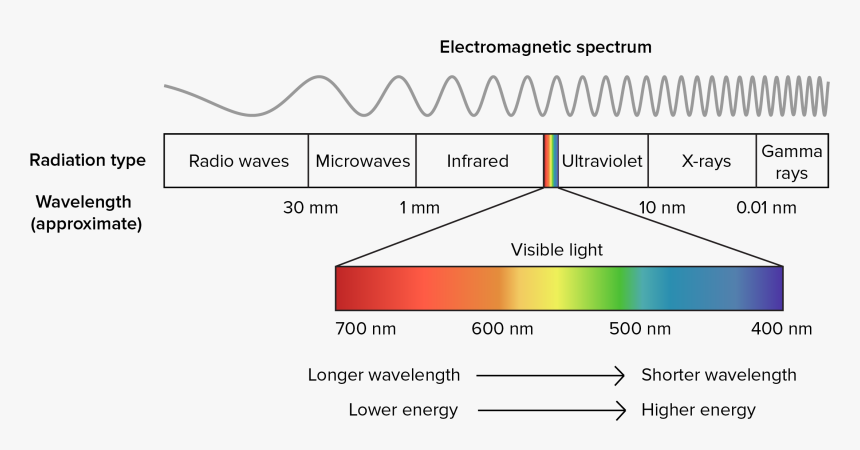Body pain is getting more and more familiar with elderly individuals all over the world. If you are over 40 years old and reading this article, most probably you’ve found us while searching about pain relief therapy. According to a study, about 20.4% of adults in the United States had chronic pain, and 8% of adults had high impact chronic pain in 2016.
Body pain is a big reason behind the disability of older adults, which impacts the total workforce. So, it is necessary to find potential remedies for this emerging problem. One of the ways we can treat pain is by using IR therapies. IR is the short form of Infrared, which is a part of the electromagnetic wave spectrum. Unlike traditional medicines, if administered properly, IR therapy can improve the condition of life significantly of those who suffer from pain.
IR therapy is not a new way of treating pain, but in recent years, it has seen tremendous growth as more scientific researches are being conducted about it.
What is Infrared ray?
We are living in a sea of electromagnetic waves. This ‘sea’ of electromagnetic waves consists of a range of frequencies of electromagnetic radiation. The different parts of the spectrum have different names depending on their wavelength. Even though the various type of electromagnetic wavelengths overlaps with one another, we have set a distinct range to define them. In the electromagnetic wave spectrum, IR radiation ranges from 700 nm to 1 mm wavelength.

What’s so special about IR?
Infrared rays can penetrate through tissues and can reach the muscle layer. It can even reach the bone layer by tuning the wavelength, which can help reduce pain. And on top of that, the process is entirely painless. Unlike UV lights, scientific studies suggest that IR posses little to no harm to tissues and it has no adverse side effects like that of traditional medicine. As a result, IR therapy has gained a lot of interest and traction from the scientific community in recent years.
How does IR therapy work?
Usually, the lights from 800 nm to 1200 nm wavelength are used in IR therapy. IR light penetrates the skin and reaches the muscle layer, in some cases, bones, and our body absorbs it. Photoreceptors present in our cells facilitates this process. This in turn, promotes several metabolic processes, which increases blood flow and assists in repairing damaged cells and tissues.
Applications of IR therapy:
IR can be used in many health conditions. Some of them include:
- Cardiovascular disease
- Arthritis
- Internal injury
- Neck and back pain
- Carpal tunnel syndrome
- Sciatica
- Post-surgical incision pain
- Tendonitis
In cardiovascular therapy, IR increases the production of nitric oxide, which is a vital cell signaling molecule and responsible for the good health of our heart. Increased nitric acid production helps the arteries relax which prevents oxidative stress, platelet clumping, and blood clotting.
In other health conditions, such as inflammation and muscle injury, IR induced increased blood flow promotes the flow of more oxygen and nutrition to the damaged cells. This promotes healing.
Nowadays, IR therapy is also being used in saunas as a way of detoxification. Some scientists are seeing IR as a viable way of treating cancer. Research suggests that infrared waves can activate nanoparticles that can destroy cancer cells. Photoimmunotherapy is one such way to destroy harmful cancer cells.
Even though in most cases, IR has no adverse health effects. It is advisable to seek professional help before getting IR therapy. Prolonged exposure to heat can damage tissues and skin causing thermal damage. It can cause dry skin, rash, and can even damage vital organs such as eyes. IR can penetrate the skin thus if one is exposed to IR rays and closes the eyes, it can still damage the eyes internally. Medical studies suggest that prolonged exposure to IR waves can damage cornea and retina which can lead to eye cataract, retinal burns and corneal ulcer. Also, people with heart disease or chronic disease are advised not to take IR therapy to avoid any potential side effects.
IR has lots of potential benefits compared to its side effects, which are barely seen and reported. Because of the nature of the therapy, we are highly unlikely to see any side effects pop up in our lifetime. This can lead to new, improved ways of treating pain and may even improve other treatments by combining them with IR therapy. In the future, IR therapy may even become a new way of treating several medical conditions with no side effects.
Sources:
- Biological effects and medical applications of infrared radiation. Retrieved from https://www.ncbi.nlm.nih.gov/pmc/articles/PMC5505738/ on 05/24/2020
- Prevalence of Chronic Pain and High-Impact Chronic Pain Among Adults — United States, 2016. Retrieved from https://www.cdc.gov/mmwr/volumes/67/wr/mm6736a2.htm on 05/24/2020
- Effect of infrared radiation on the lens. Retrieved from https://www.ncbi.nlm.nih.gov/pmc/articles/PMC3116568/ on 05/24/2020
- Near-Infrared-Responsive Cancer Photothermal and Photodynamic Therapy Using Gold Nanoparticles. Retrieved from https://www.ncbi.nlm.nih.gov/pmc/articles/PMC6403910/ on 05/24/2020
Subscribe to our newsletter to stay updated


